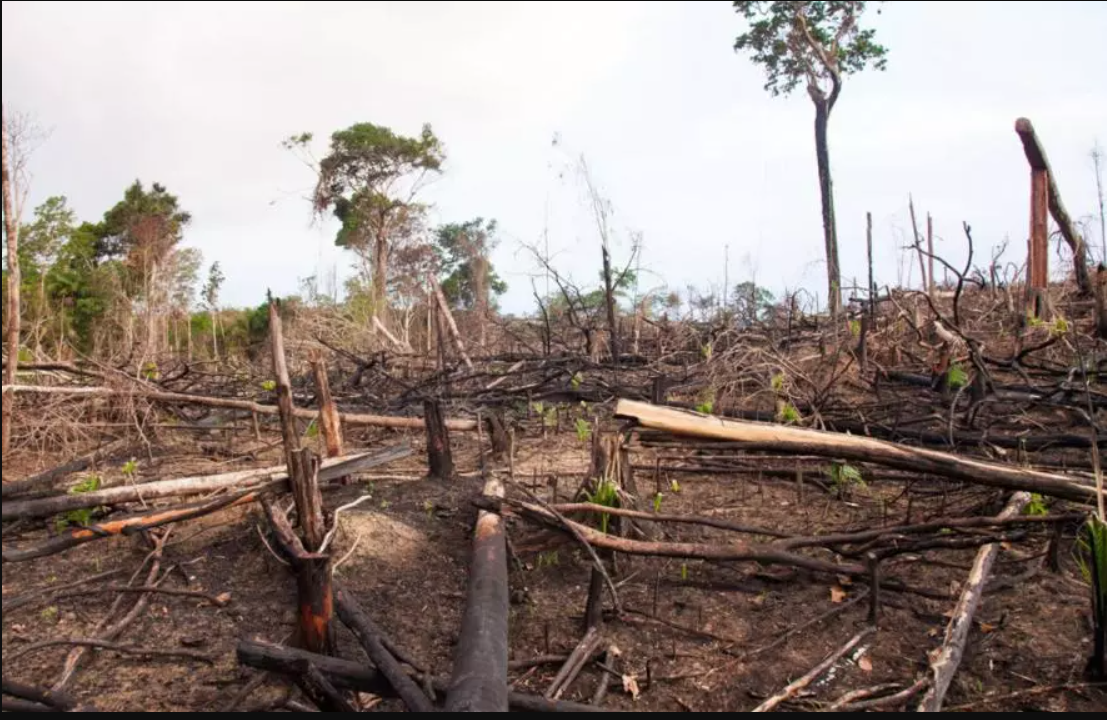It has been one and a half years now and the world has not yet recovered from the COVID-19 pandemic. But it is not just COVID-19 as the world is witnessing new diseases emerging with an increased frequency. Ebola, Swine Flu, Zika virus, SARS, MERS—all are infectious diseases that have emerged in recent times.
One long-standing belief is that disease outbreaks are intricately related to biodiversity, especially that of plants. Forest clearance and the resulting habitat loss of many species in an area make humans exposed to many pathogens (a bacterium, virus or a fungi that can cause disease). In fact, many of these pathogens are new to humans.
Bolstering this field of research, a new study published in the journal Frontiers in Veterinary Science on March 24 says that outbreaks of infectious disease are more likely in areas where deforestation has happened. The study also says that monoculture plantations are equally likely to increase disease outbreaks. Monoculture plantations mean planting huge numbers of trees of a specific type. An example of this are palm tree plantations in huge swathes of land—which is a model of commercial and industrial plantations. It indicates that forest biodiversity is what is needed to keep such disease outbreaks in control.
Changes in land use, according to the study, is a significant factor in the emergence of infectious diseases caused by zoonotic viruses like the SARS-CoV-2, and also vector-borne diseases like malaria. Vector-borne diseases are those transmitted by mosquitoes, flies etc. Zoonotic pathogens are those that jump from an animals to humans.
The reason behind deforestation leading to more disease outbreaks is because diseases are in many ways filtered and blocked by various species inhabiting a dense and bio-diverse forest. When this bio-diverse ecosystem is disturbed by cutting a range of plants, and in their place a specific variety is planted, many species get wiped out and few species like rats and mosquitoes thrive. These species then spread pathogens across human and non-human habitats. The outcome becomes the loss of the natural regulation of diseases.
Commenting on the findings of the study, Serge Morand, the first author of the study, was quoted to have said,“ I was surprised by how clear the pattern was. We must give more consideration to the role of the forest in human health, animal health and environmental health. The message from this study is ‘don’t forget the forest’.” Morand is associated with the French National Centre for Scientific Research.
The researchers studied the period from 1900 to 2016, which had 3,884 outbreaks and 116 zoonotic diseases that jumped from one species to another, and 1996 outbreaks that emerged from 69 vector-borne diseases. The vector-borne diseases were carried by mosquitoes, flies and ticks.
The researchers studied the trends for forest cover, plantations, populations and disease and the correlation among them. The study found that there had been an increase in outbreaks when plantation of specific trees increased with overall forest density decreasing.
In Brazil, the study found that deforestation increased the risk of malaria outbreaks. Similarly, in south east Asia, forest clearance has led to more favourable environments to the mosquito Anopheles Darlingi, which acts as a vector of several diseases. Again in Africa, loss of primary forest has been linked to the emergence of Ebola.
The study adds to the growing evidence that viruses are more likely to get transmitted to humans or other animals that live near ecosystems that are disturbed by human activities like forest clearance, swamps drained for farmland or mining or residential projects.
All these are the results of the trade pattern and consumer behavior. Large-scale industrial production set-ups destroy forest covers that are inhabited by a wide variety of species.
Morand further warned about the health risk of new commercial or industrial projects, “We should take the costs of public health into account when considering new plantations or mines. The risks are first to local people, but then worldwide because we have seen with Covid how quickly diseases can spread.”





